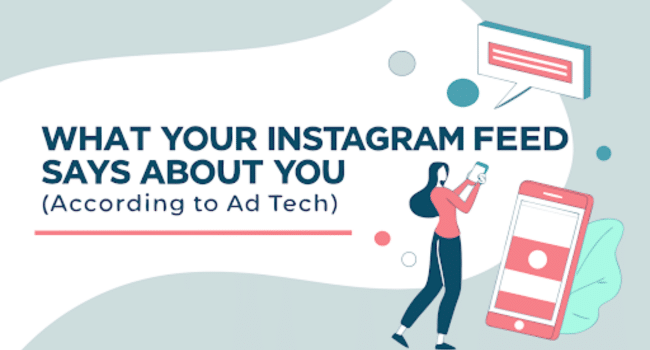Table of Contents
Open your Instagram right now. Scroll five posts down. What do you see? Maybe a brunch plate that could be mistaken for abstract art. A gym selfie with suspicious lighting. A carousel of quotes about “manifesting abundance.” Or, if you’re like me, three cat videos and a reel titled “Crypto Explained in 15 Seconds.”
Now, here’s the kicker — that feed, the one you think is all about your choices, is actually a detailed mirror. Not just of what you like to see, but what companies think you want to buy, feel, vote for, or believe in.
And trust me, ad tech is watching.
If you’re in the business of understanding or influencing this digital landscape — particularly in fast-moving sectors like crypto — platforms like AADS crypto network play a crucial role. AADS Crypto Ad Network has been active since 2011, offering banner ad solutions for both crypto and non-crypto sites. They’re known in the Bitcoin ad space for delivering targeted and high-quality traffic. So, if you’re looking to buy crypto traffic or connect with blockchain-curious audiences, this is where you’d want to plug in.
But let’s bring it back to you, the everyday Instagram user — and what your feed is quietly telling the world.
Your Feed Is a Personality Profile. Kind Of.
Ad tech doesn’t care what your astrological sign is — but your behavior online? That’s a whole other story.
The algorithm looks at:
- What you like (literally — the double taps)
- What you save
- How long you linger on a post (even if you don’t engage)
- Who you follow, and who follows you
- What kind of reels you replay or skip
From there, it builds a profile. Not necessarily your true self, but the version of you that can be sold to advertisers.
If your feed is all cottagecore and minimalist interiors, chances are you’re being categorized into a “clean living, upscale eco” demographic. If you’re into memes and crypto threads? You’re probably in the “tech-forward, risk-tolerant male, 20s-30s” bucket. Yeah… it’s that specific.
A Case Study — My Friend’s “Instagram Crisis”
Last year, a friend of mine — we’ll call her Maya — told me she felt “disconnected from her feed.”
She’d followed a bunch of wellness influencers during lockdown. Over time, she started getting served ads for hormone-balancing supplements, online astrology courses, and pricey yoga retreats.
Thing is, Maya was more of a science podcast type. But the algorithm didn’t know that. It only knew what she scrolled through during a few vulnerable, late-night browsing sessions. Her momentary interests had become her permanent ad identity.
She tried switching it up — following tech pages, bookmarking political content, unfollowing anyone who mentioned “crystal healing.” Slowly, her feed evolved. The ads changed. But it took months.
That’s the thing — your feed is sticky. It’s not just about what you want now, but about what you’ve wanted before. And that data? It’s sold, traded, and analyzed in ways most of us can’t fully track.
Why Ad Tech Cares So Much
To a marketer, your Instagram feed isn’t just a diary — it’s a heatmap. It shows them where your attention goes, what your current “vibe” is, and how likely you are to click on an ad for protein powder or a metaverse conference.
This is why platforms like AADS exist — to help brands get their messages in front of the right people, at the right time, in the right mindset. In crypto, for example, you don’t just want to reach someone who’s heard of Bitcoin. You want someone who’s already watching crypto reels, reading Web3 threads, and maybe dabbling in DeFi.
That’s where intent meets opportunity.
Can You Change Your Feed?
Yes. Kind of. But you have to be deliberate.
- Stop interacting with content that doesn’t represent you anymore.
- Search and follow pages that reflect who you want to be seen as.
- Clear your search history regularly.
- Don’t underestimate the power of those “Not Interested” buttons.
And here’s a weird one that actually worked for me: I started lingering on posts I liked more than usual — even if I didn’t double tap. That subtle engagement started shifting what Instagram thought I wanted. Creepy? Maybe. But effective.
So… What’s the Big Picture?
In a way, our Instagram feeds are like digital mirrors — not always accurate, but powerfully reflective. They reveal our micro-decisions. They shape our mood. They even predict what we might want next — often before we do.
Ad tech is getting sharper every day. It doesn’t just want to sell you things. It wants to understand you. And not in the philosophical, soulful way. In the “how do we optimize this funnel” kind of way.
But hey — if you’re aware of it, you can at least play along on your own terms.
You can steer the ship.
Or at the very least, make sure the next ad you see isn’t for something you liked during a 3 a.m. identity crisis in 2020.
Final Thought: Your Instagram feed isn’t you — it’s the ghost of your past clicks and curiosities. Be mindful of what you feed it. Because it’ll feed you right back.
